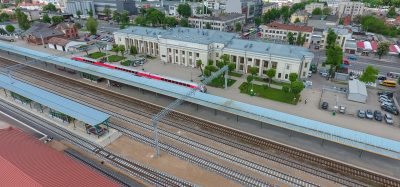How smart lighting can improve passenger experience on Britain’s railways
Posted: 17 May 2017 | | No comments yet
David Long, Lighting Engineer at Schréder UK, discusses how IoT lighting technology can help modernise the UK rail experience.
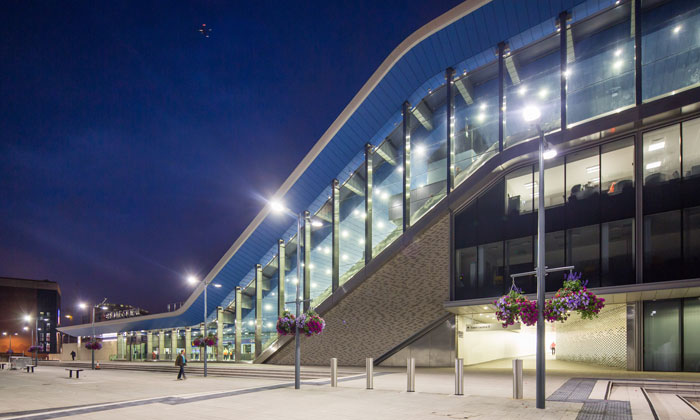

David Long, Lighting Engineer at Schréder UK, discusses how IoT lighting technology can help modernise the UK rail experience in line with 21st century demands - from electric charging ports for devices and vehicles, in-built CCTV and PA address systems, to distributing emergency notifications and evacuation guidance, all from one energy-saving lighting column.
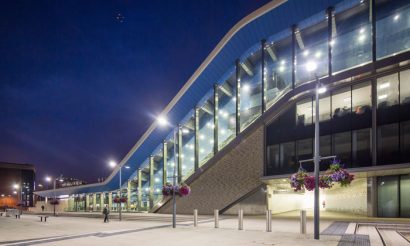

Reading station
Since the first rail journeys, passengers have consistently wanted three things: the train to be on time, to find a seat and for the ticket to be inexpensive. However, in recent years, the expectations of passengers have increased. For UK rail operators to be able to meet these demands, they have the opportunity to invest in innovative technologies to modernise the network.
Lighting plays an important – and often underestimated – role at stations across the country. Lighting columns enable passengers and staff to enter, exit and navigate stations safely, especially at night or when ambient light levels are low during the winter months. However, they can do much more.
Internet of Things (IoT) connected lighting is one of the fastest growing areas of technology in the UK, although it has yet to be widely implemented across the UK rail network. With British rail passengers making more than 1.7 billion trips a year, new ‘smart’ lighting columns can help significantly improve the passenger experience whilst acting as an additional security and traffic management tool for station operators.
Smart luminaires are modular interactive lighting columns designed to encourage social connectivity in public areas. They combine energy-efficient LED lighting technology alongside cameras, speakers, internet connectivity and a range of electric charging applications, all in one unified column.
Improving safety and security
The combination of large retail environments and heavy footfall means that criminals have been known to regularly target train stations and the passengers using them. The latest figures from the British Transport Police (BTP) reveal increases in the total number of reported crimes at some of the UK’s busiest train stations – including London Waterloo, Clapham Junction and Manchester Victoria.
Smart lighting columns are fitted with embedded CCTV cameras capable of monitoring and recording events and feeding the footage back to an incident control room in real-time. When aligned with passenger notification boards, CCTV can help make positive identifications by facial recognition. The columns also have their own in-built Public Address (PA) system which station managers can use to put out alerts regarding delayed or cancelled trains or speak directly to passengers in one area of a station.
Combined, these features are able to provide an added layer of protection and monitoring so that security officials in an incident control room have a clear understanding of an event in real-time and can make quick decisions based on accurate information. They also provide BTP officers with the evidence they may need to prosecute criminal behaviour.
Station staff can use the lighting columns to broadcast important security announcements and remind passengers of emergency evacuation procedures. The PA system – when used in conjunction with the column’s LED light ring – is capable of physically guiding passengers to designated safe-zones.
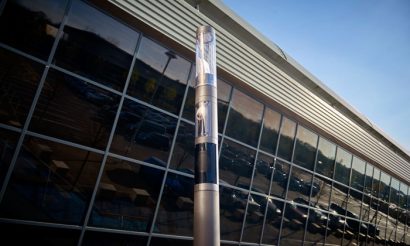

Transforming the passenger experience
Modern passengers have come to expect a positive digital experience when travelling, which presents operators with a big challenge. Multifunctional smart lighting columns can help operators meet these increasing demands and improve the passenger experience.
Firstly, with electric charging still not widely available across the UK rail network, passengers can use the electric charging ports embedded in lighting columns to charge consumer devices. For countries like Norway, where electric cars have been more widely adopted, these columns can also be installed at stations and ports to allow passengers to charge their vehicles – acting as part of a nationwide EV charging network.
Secondly, operators can use the embedded Wi-Fi network to improve the commercial relationship with passengers. In a retail context, operators can use the columns to send out alerts regarding their latest promotions, as well information regarding facilities at a specific location. Importantly for passengers, the technology also provides operators with an easy route to inform them of any delays or cancellations to a service instantly and any alternative routes of travel, helping to reduce confusion.
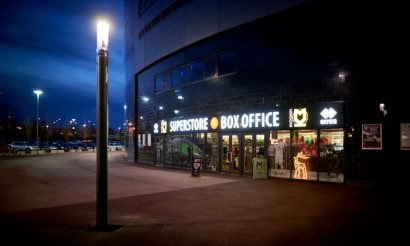

Vision of the future
Energy-efficient LED lights can also reduce energy consumption, in some cases by as much as 90%. As a result, the cost of lighting the rail network can be significantly reduced, freeing up funds to be used on other regeneration projects.
The most innovative lighting solutions can provide adaptive station lighting, giving operators flexibility in how lighting is used. Lights can be dimmed based on footfall, fitted with passive infrared (PIR) sensors that activate the lights once movement is detected, or scheduled to remain active during planned engineering works or station maintenance. This not only provides a safe and comfortable environment for passengers but can facilitate further cost savings by only using energy when required.
Already capable of offering electric charging ports for vehicles as well as secure cycle storage, in the future smart lighting columns can be used outside stations to provide traffic alerts, detect available parking spaces and provide live weather data.
Conclusion
Smart lighting columns, with their ease of installation and low-maintenance requirements, are an efficient solution to install across the rail network. Not only do they bring vital station infrastructures together in a single cost-effective unit, but they allow stations with limited external space to maximise their outdoor environments by reducing the volume of street furniture; minimising both the environmental impact and cost.
Smart lighting is no longer just a vision of the future but a viable reality. As the UK rail network gears up for its biggest upgrade in a generation, smart technologies can help revitalise train stations and enable them to become the transport hubs that 21st century passengers need.







